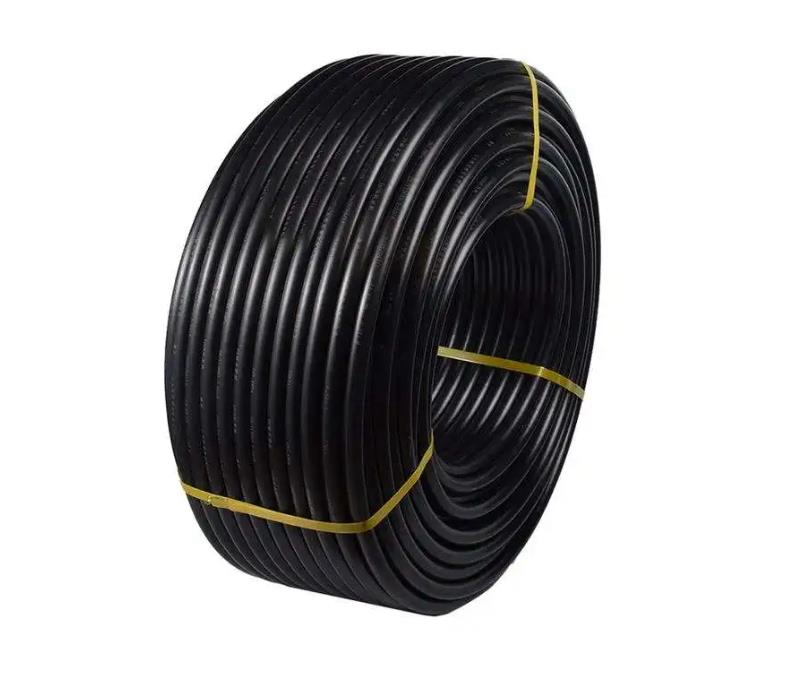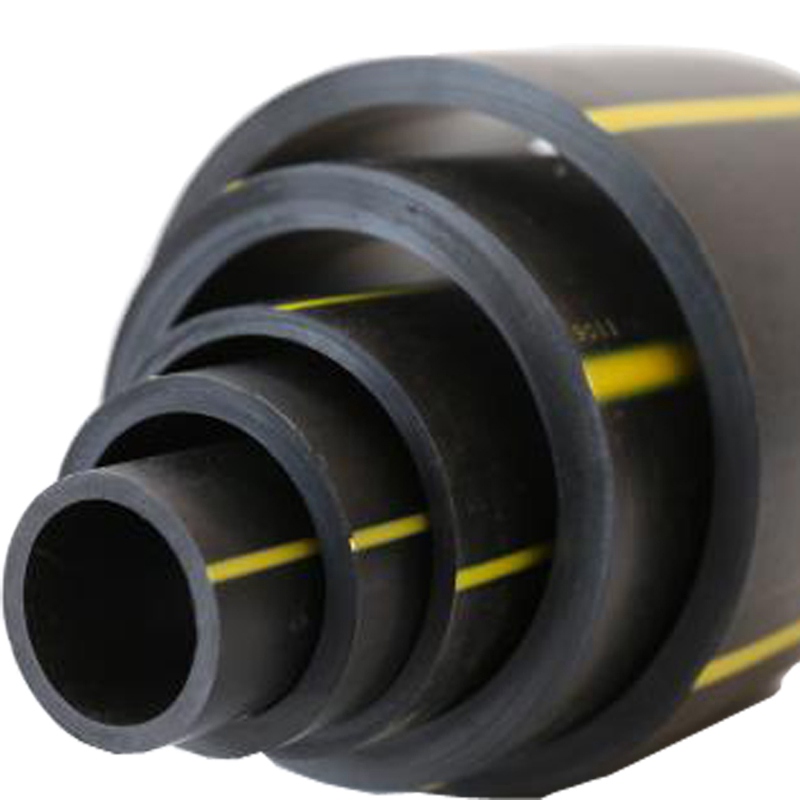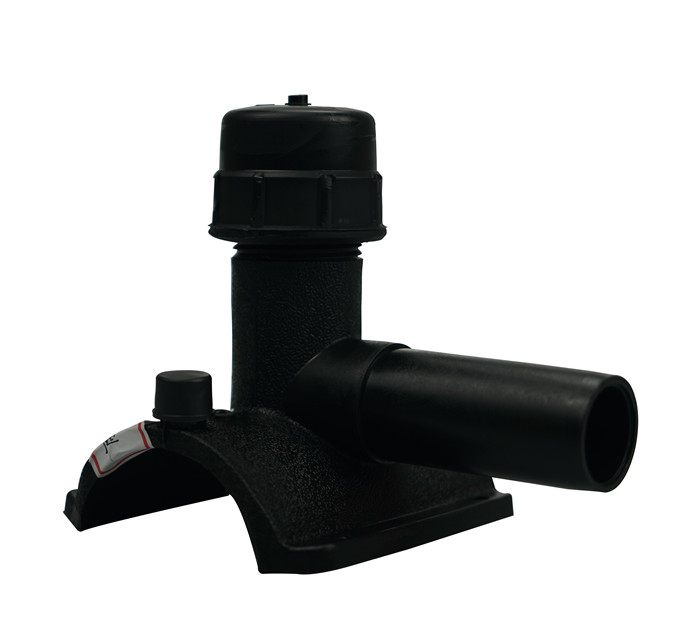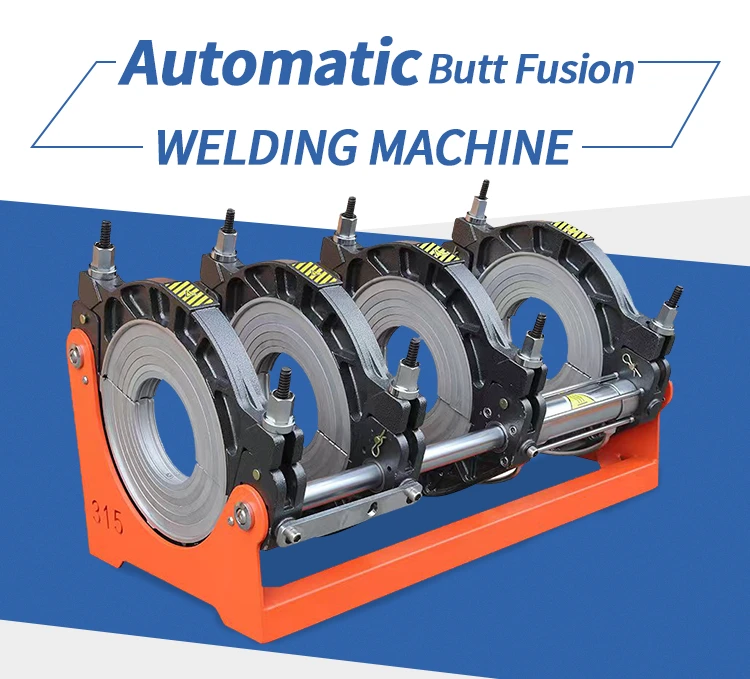Product Name | PE100 gas HDPE Pipe |
Color | yellow with bule line |
Standard | GB/T13663-2000,ISO 4427-1:2007 |
Specification | 20-630mm |
Pressure | 0.6MPa SDR26,0.8MPa SDR21,1MPa SDR17,1.25MPa SDR 13.6,1.6MPa SDR 11 |
Main application | Transportation gas Pipe |
Guarantee | More than 50 years |
There are many kinds of HDPE gas pipe specifications, such as: inner diameter 2" 4" 6" 8" is the most commonly used. To understand HDPE gas pipe, we must first understand the characteristics of some HDPE materials.
What type of raw materials are used to produce HDPE gas pipes?
The main grades of raw materials used in HDPE gas pipes are PE100 and PE80. The strength and hardness of general high-density polyethylene are higher than those of special materials for gas pipes. However, for pipes, aging will occur over time, and their mechanical properties and physical properties will be attenuated, and pipes will change from initial ductile failure attenuation to brittle failure after aging. For the decay and aging process, the special material for gas pipes is much slower than the general HDPE. Therefore, at present, MDPE is mainly used as a special material for gas pipes. In the relevant international standards ISO04437-1997 and GB15558.1 standards, there are strict performance index requirements for materials lower than MDPE gas pipes to ensure that the service life is 50 years under normal conditions.
The raw materials used to produce HDPE gas pipes and water supply pipes are PE80 and PE100.

HDPE gas pipe specifications
HDPE gas pipes are mainly divided into 0.6Mpa, 0.8Mpa, 1.0Mpa, 1.25Mpa, 1.6Mpa from the pressure level. Mpa is the pressure unit. For example, 0.6Mpa means the pressure of 10 kg.
According to the diameter of the PE pipe, it can be roughly divided into: 20, 25, 32, 40, 50, 63, 75, 90, 110, 125, 160, 180, 200, 225, 250, 280, 315, 355, 400, 450, 500, 560, 630, 710, 800, 900, 1000, 1200, 1400 units are mm or millimeters.
OD | SDR11 HDPE gas pipe | ||
Wall Thickness | Weight(KG)/M | Price(USD)/M | |
63mm/2in. | 5.8+00.7 | 1.102 | 2.40 |
110mm/4in. | 10.0+01.1 | 3.306 | 7.00 |
160mm/6in. | 14.6+01.6 | 7.016 | 14.70 |
225mm/8in. | 20.5+02.2 | 13.843 | 28.40 |
OD | SDR17 HDPE gas pipe | ||
Wall Thickness | Weight(KG)/M | Price/M | |
63mm/2in. | 3.8+00.5 | 0.752 | 1.60 |
110mm/4in. | 6.6+00.8 | 2.272 | 4.80 |
160mm/6in. | 9.5+01.1 | 4.748 | 9.90 |
225mm/8in. | 13.4+01.5 | 9.399 | 19.30 |
2" HDPE gas pipe specifications
Product Name | PE100 2" HDPE gas pipe |
Color | black with yellow line |
Standard | GB/T13663-2000,ISO 4427-1:2007 |
Specification | 20-630mm |
Pressure | 0.6MPa SDR26,0.8MPa SDR21,1MPa SDR17,1.25MPa SDR 13.6,1.6MPa SDR 11 |
Main application | Transportation gas Pipe |
Guarantee | More than 50 years |
4" HDPE gas pipe specifications
Product Name | PE100 4" HDPE gas pipe |
Color | black with yellow line |
Standard | GB/T13663-2000,ISO 4427-1:2007 |
Specification | 20-630mm |
Pressure | 0.6MPa SDR26,0.8MPa SDR21,1MPa SDR17,1.25MPa SDR 13.6,1.6MPa SDR 11 |
Main application | Transportation gas Pipe |
Guarantee | More than 50 years |
Product Name | PE100 6" HDPE gas pipe |
Color | black with yellow line |
Standard | GB/T13663-2000,ISO 4427-1:2007 |
Specification | 20-630mm |
Pressure | 0.6MPa SDR26,0.8MPa SDR21,1MPa SDR17,1.25MPa SDR 13.6,1.6MPa SDR 11 |
Main application | Transportation gas Pipe |
Guarantee | More than 50 years |
8" HDPE gas pipe specifications
Product Name:8" HDPE gas pipe
Brand Name:Haili pipe
Material: PE100, 100% virgin HDPE granules
Specification:DN16mm-1000mm
Length:5.8m, 11.8m, or as per your request
Thickness:2.3mm-90.2mm
Standard:ISO4427, GB/T13662.2-2018
Processing Service:Moulding, Cutting
Raw material:PE100, 100% virgin HDPE granules
Working pressure:0.6Mpa-2.0Mpa
Advantage:Cost-effective, chemical resistant, ease of connection & installation
Service life:Over 50 years
Color:Black with blue stripes, or customized
Connection:Butt welding, socket fusion, electrofusion, flanged connection
Working Temperature:-60℃~60℃
Sample:Free
HDPE High Density Polyethylene Chemical and Physical Properties specifications
The high crystallinity of PE-HD results in its high density, tensile strength, high temperature distortion temperature, viscosity and chemical stability. PE-HD has stronger permeation resistance than PE-LD. PE-HD has lower impact strength. The properties of PH-HD are mainly controlled by density and molecular weight distribution. PE-HD suitable for injection molding has a narrow molecular weight distribution. For the density of 0.91~ 0.925g/cm3, we call it the first type PE-HD; for the density of 0.926~ 0.94g/cm3, call it the second type PE-HD; for the density of 0.94~ 0.965g/cm3 , called the third type PE-HD. The flow characteristics of this material are very good, with an MFR between 0.1 and 28. The higher the molecular weight, the worse the flow characteristics of PH-LD, but the better impact strength. PE-LD is a semi-crystalline material with high shrinkage after molding, between 1.5% and 4%. PE-HD is prone to environmental stress cracking. Cracking can be mitigated by using materials with very low flow properties to reduce internal stress. PE-HD is easy to dissolve in hydrocarbon solvents when the temperature is higher than 60C, but its resistance to dissolution is better than that of PE-LD.
Melting temperature of HDPE: 220~260C. For materials with larger molecules, the recommended melting temperature range is between 200 and 250C. Mold temperature: 50~95C. Plastic parts with wall thickness below 6mm should use higher mold temperature, and plastic parts with wall thickness above 6mm should use lower mold temperature. The cooling temperature of the plastic part should be uniform to reduce the difference in shrinkage. For optimal machining cycle time, the cooling channel diameter should be no less than 8mm and the distance from the mold surface should be within 1.3d (where "d" is the diameter of the cooling channel). Injection pressure: 700~1050bar. Injection Speed: High-speed injection is recommended. Runner and gate: The runner diameter is between 4 and 7.5mm, and the runner length should be as short as possible. Various types of gates can be used, and the gate length should not exceed 0.75mm. Especially suitable for the use of hot runner molds.

Main uses and advantages of HDPE gas pipes specifications
HDPE safety gas pipe products not only have excellent long-term compressive strength, but also have excellent resistance to slow stress cracking growth, rapid stress propagation resistance and excellent anti-sagging performance. They are the first choice for gas distribution network construction. one.
Advantages of HDPE safety gas pipeline products:
1. Environmental protection and energy saving, produced with polyethylene gas special material, polyethylene raw material only contains two elements of carbon and hydrogen, which is harmless to the environment, green and environmentally friendly, and the inner wall is smooth.
2. The flow capacity is large, which can effectively reduce the loss during the conveying process.
3. High strength, excellent environmental stress, anti-cracking performance, and good creep resistance, ensuring continuous and stable operation of conveying work.
4. Strong toughness, good product flexibility, excellent impact resistance, the pipeline is deformed by external impact without affecting the operation of the pipeline, and can be recovered, which can realize the joint action of the pipeline and the soil, and effectively ensure the safety of the pipeline.
5. Corrosion resistance, excellent corrosion resistance, the pipeline is not corroded by external acid, alkali and salt. There is no scaling on the inner wall, the connection is safe and reliable, and the hot-melt butt or electro-fusion connection is adopted to form a homogeneous connection system and the connection is tight.
6. Long service life, under normal conditions, the service life can reach 50 years.
Characteristics of 2" 4" 6" 8" HDPE gas pipes
(1) Reliable connection: The HDPE piping system is connected by electrothermal fusion, and the strength of the joint is higher than that of the pipe body.
(2) Good low temperature impact resistance: The low temperature embrittlement temperature of polyethylene is extremely low, and it can be used safely in the temperature range of -60-60 °C. During construction in winter, due to the good impact resistance of the material, the pipe will not be brittle.
(3) Good resistance to stress cracking: HDPE has low notch sensitivity, high shear strength and excellent scratch resistance, and its resistance to environmental stress cracking is also very outstanding.
⑷Good chemical corrosion resistance: HDPE pipes are resistant to corrosion by a variety of chemical media, and chemical substances in the soil will not cause any degradation to the pipes. Polyethylene is an electrical insulator, so it does not rot, rust or electrochemically corrode; it also does not promote algae, bacterial or fungal growth.
⑸Aging resistance, long service life: polyethylene pipes containing 2-2.5% evenly distributed carbon black can be stored or used outdoors for 50 years without being damaged by ultraviolet radiation.
⑹ Good wear resistance: The comparison test of wear resistance of HDPE pipe and steel pipe shows that the wear resistance of HDPE pipe is 4 times that of steel pipe. In the field of mud transportation, compared with steel pipes, HDPE pipes have better wear resistance, which means that HDPE pipes have longer service life and better economy.
⑺Good flexibility: The flexibility of HDPE pipes makes it easy to bend, and in engineering, obstacles can be bypassed by changing the direction of the pipes. In many occasions, the flexibility of the pipes can reduce the amount of pipe fittings and installation costs.
⑻Easy to handle: HDPE pipes are lighter than concrete pipes, galvanized pipes and steel pipes. It is easy to handle and install, and the lower manpower and equipment requirements mean that the installation cost of the project is greatly reduced.
⑼ A variety of new construction methods: HDPE pipes have a variety of construction technologies. In addition to traditional excavation methods, various new trenchless technologies such as pipe jacking, directional drilling, lining, It is the only choice for some places where excavation is not allowed, so HDPE pipes are used in a wider range of applications.
HDPE gas pipes parts

The tapping saddle tee is the most commonly used accessory.The method of use is very simple, insert the tapping saddle tee into the joint of the pressure reducing valve, and tighten the screw on the tee.
689.webp)
464.webp)
562.webp)
610.webp)
258.webp)
971.webp)
580.webp)
655.webp)


294.webp)
476.webp)
420.webp)
146.webp)


